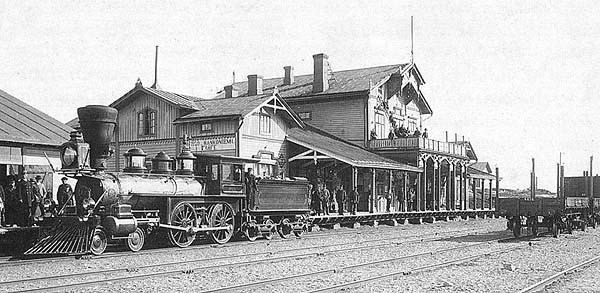Dates of operation 1872–1875 Headquarters Hanko Successor VR Group | Length 149 kilometres (93 mi) Locale Finland | |
 | ||
Track gauge 1,524 mm (5 ft)
Russian gauge | ||
Hanko hyvink railway
The Hanko–Hyvinkää Railroad, 1872–1875 (Swedish: Hangö–Hyvinge Järnväg), was Finland's first privately funded railway.
Contents
Hanko is the southernmost town in Finland. Hanko has a seaport which, thanks to its location, can be used for the longest possible time during the sometimes very severe, and freezing, Finnish winters. Because all the other Finnish seaports might be frozen solid during the winter, there was an anticipation for a large amount freight transit traffic. As such, a decision was made to privately fund the 149 kilometres (93 mi) railway from Hanko to the Finnish State Railways' Helsinki–Hämeenlinna line, with the connection at Hyvinkää.
Work on the new railway began in 1872 with the inaugural run being on October 8, 1873. Owing to insufficient funds, the private company soon got into financial trouble. Facing almost certain liquidation, the railroad company was sold to the Finnish State Railways in 1875. Today, the Finnish Railway Museum is based at the site of the original roundhouse and Hyvinkää railway station buildings in the town of Hyvinkää.
Motive power
As the first private railway company in Finland, the railroad company obtained nine "American style" Baldwin 4-4-0 steam locomotives, in addition to four engines of European manufacture.
